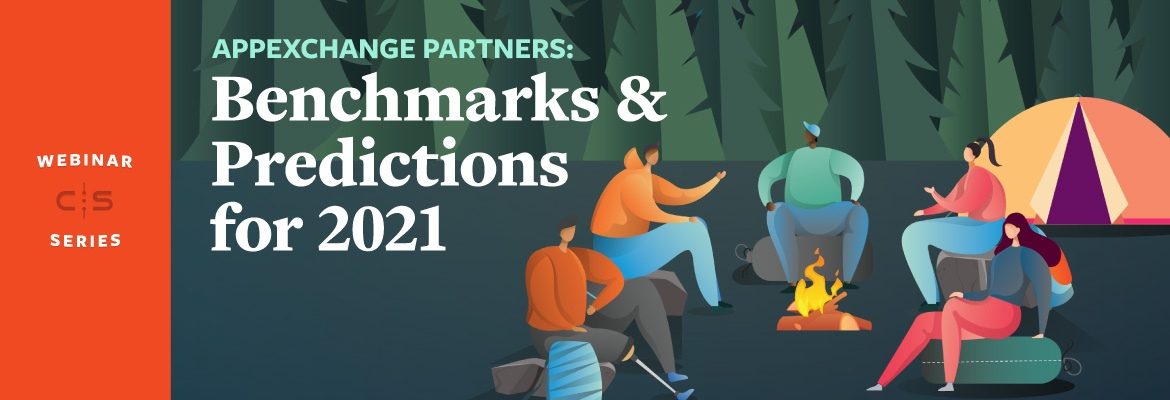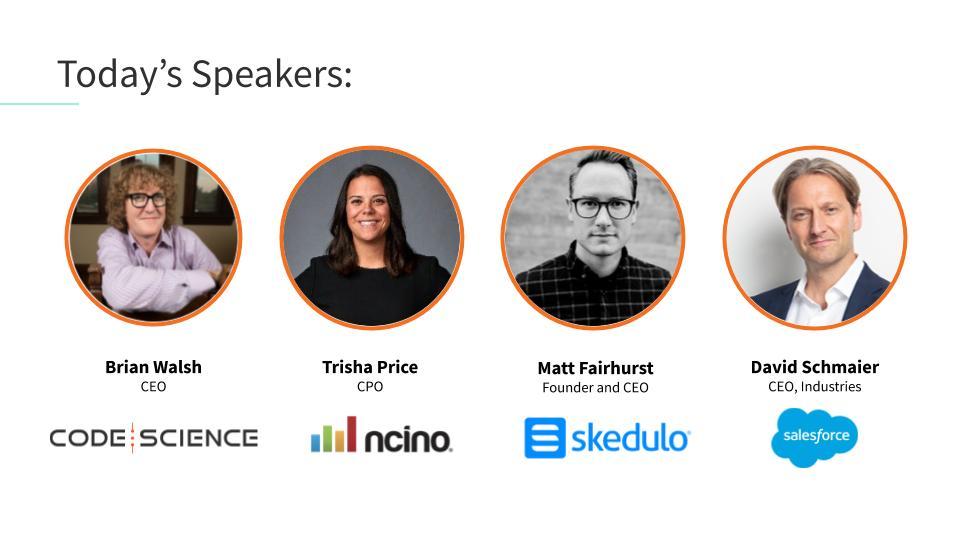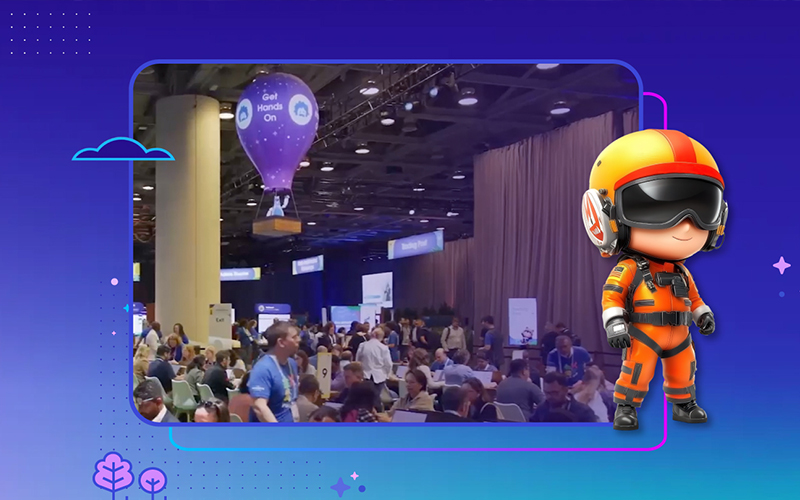
Each year we publish our State of AppExchange Partners Report to share the latest trends in the Salesforce ecosystem and summarize our findings from our annual partner survey. In previous years, the launch of our report has coincided with Dreamforce. There we would host a partner panel session to discuss our survey.
This year, our report, Dreamforce, and our panel session took a different shape. For the first time, we made this session available for the public.
CodeScience CEO, Brian Walsh, hosted an all-star cast of ecosystem partners. We were joined by:
- Trisha Price, Chief Product Officer at nCino
- Matt Fairhurst, Co-Founder and CEO at Skedulo
- David Schmaier, CEO at Salesforce Industries (former Founder and CEO of Vlocity)
While our conversation spanned many topics — impacts of COVID, why business leaders should consider Salesforce, diversity and inclusion, and much more — we’re bringing you just a few of our most notable moments.
What is the Survive-Adapt-Thrive Framework and the Great Separation?
The central theme of this year’s report is The Great Separation, which stems from a framework we developed early in the pandemic to assess the ways in which ISV partners are responding. We call this the Survive-Adapt-Thrive Framework or SAT.
Companies in the Survive category are those whose businesses were directly impacted by COVID — brick and mortar stores, travel, entertainment, etc. Their primary goals are focusing on how to outlast the pandemic and extending their runway as long as possible.
The Adapt category was our largest group of respondents from the survey. This group provided us with the secondary theme of the report — the Salesforce ecosystem is incredibly resilient. Brian explains, “Our general hypothesis was that we would see an increase of churn and attrition…What was surprising was that (churn) didn’t even make the top 5 problems that our ISVs face.”
Why?
“We have an incredibly resilient ecosystem. The business is strong because it’s built on a system of record; it’s built with a system of engagement. Those are not easy to pull out of your organization, and you keep using them time and time again.”
– Brian Walsh, CEO at CodeScience
46% of respondents stated that they anticipate exceeding their revenue expectations for 2020.
That doesn’t sound like an ecosystem struggling to find its way.
The last segment, Thrive, are those who “literally started leveraging COVID.” Brian explains that companies like Zoom, Slack, Teladoc, AmWell, and more were perfectly positioned to establish business continuity. The result is the Great Separation. These organizations are carving out an incredible lead.
For Matt Fairhurst, Founder and CEO of Skedulo, he had early exposure to the impacts of COVID before it made its way to the West. “I was in Hong Kong and traveling through Asia, and that was a period of time where other parts of the West hadn’t quite experienced what this was going to look like. But it was very real there. Everything was shut down, and I think that trip kicked me into action.”
Skedulo repackaged their existing technology to provide a turnkey solution for governments and businesses that needed to supply COVID-19 tests. Their solution now underpinned the NFL, NBA, MLB, New York City, and the city of Berkeley to just name a few.
Why Choose Salesforce?
David Schmaier is now the CEO of Salesforce Industries, but previously he was the Founder and CEO of Vlocity — a premier Salesforce ISV, which Salesforce then acquired in 2020. He explains why companies choose Salesforce.
He explains, “By going with Salesforce, we were able to ship our first product in 6 to 9 months. And we got a huge leg up with the Salesforce ecosystem…We would have literally spent 3, 4, or 5 years and possibly 10s if not 100s of millions of dollars to build our platform.”
Furthermore, “It’s a great platform where you can build anything. It accelerates your time to value and what is equally as important is the Salesforce world of customers that help you get your first customers to become successful.”
Trisha Price, Chief Product Officer at nCino, describes the phenomenon as the “Blue Halo.”
Many Products to Solve Key Challenges
Our survey showed that 48% of partners have more than one AppExchange product. For some, that is to address multiple industries and solve specific problems therein. But for others, like nCino, a multi-product approach still made sense for a single industry.
“We started (nCino) with the mission statement to transform the financial services industry through innovation, reputation, and speed. And we started with a focus on Commercial lending. There was so much need in the market because there was not a robust set of modern applications.”
By focusing on a specific problem and solving it, they ground themselves with the vision that “it is our first product, but we have a much broader vision to continue to solve more problems for financial institutions.”
Trisha explains why the nCino team continues to invest into Salesforce, “It’s been a natural progression to take the platform we built on top of Salesforce and continue to extend it to other problems that we can help with…(Salesforce) allowed us to focus on building banking features and not working about things like entitlements, workflows, and permissions. We knew the platform was safe. We knew how much Salesforce invests in trust. We knew how much Salesforce invests in data centers across the globe.”
Products, Technology, and Channel Conflict
With 3 major platform releases a year, one challenge that ISVs face is when to adopt the new technology that Salesforce releases. Brian calls on David to explain from the Salesforce perspective on how to keep up and assess the opportunity. Secondarily, he explores how ISVs can seize negative space and manage channel conflict.
For ISVs, David recommends, “You have to be selective in the questions you answer and pick your spots…You have to figure out how you differentiate yourself. If there’s 5 companies that do the same thing, then why should they go with you?” Understanding this is key for ISVs. Knowing where you fit in the broader picture of the Salesforce ecosystem can be challenging but also extremely rewarding.
Channel conflict is inevitable when examining an organization like Salesforce. Each year, respondents note concerns and questions about how to reduce and manage it. David explains a simplified concept to keep in mind for ISVs when positioning their product in the Salesforce ecosystem.
“If we build complimentary things, we’re partners. If we build the same things, then we’re competitors.”
Both Trisha and Matt explain that working with Salesforce to assess what areas they are going. Trisha states, “You have to figure out how you fit into the Salesforce story and how you tell your own story, but also how it fits into the bigger picture.”
Diversity and Inclusion
New this year is a section on Diversity and Inclusion. Brian accepted the challenge to leverage the platform of the report as a way to tell the stories of the ecosystems and how they are addressing Diversity and Inclusion. I would encourage all of you to read the report in full to hear the stories of success and understand that there’s still much work to be done. https://learn.codescience.com/state-of-appexchange-partners-report-2021
Both Matt and Trisha were featured in the Diversity and Inclusion section of the report, and they share parting pieces of advice for leaders to keep in mind:
“(Diversity and Inclusion) is a long journey. These are not challenges you think about for a period of time and put in the top drawer. It has to be part of the way you think about your company, your product, and how you can be a platform for change.”
– Matt Fairhurst, Co-Founder and CEO at Skedulo
“The more people can see diversity at a company, the more they’re comfortable with it. And if you get that core belief at the executive level, then that translates into hiring, attracting, and retaining diverse talent and people wanting to come work at your organization…It’s not only the right thing to do. It’s actually the best way to get business results.”
– Trisha Price, Chief Product Officer at nCino
During the conversation, many more topics were covered. From investment trends to solving hiring challenges in a mostly remote environment. You can hear it all by registering here: https://learn.codescience.com/2021-AppExchange-Benchmarks-and-Predictions-Partner-Panel-Webinar-OnDemand
Having built 10% of the AppExchange, we are the leaders in innovation on the Salesforce AppExchange. Contact us today!



